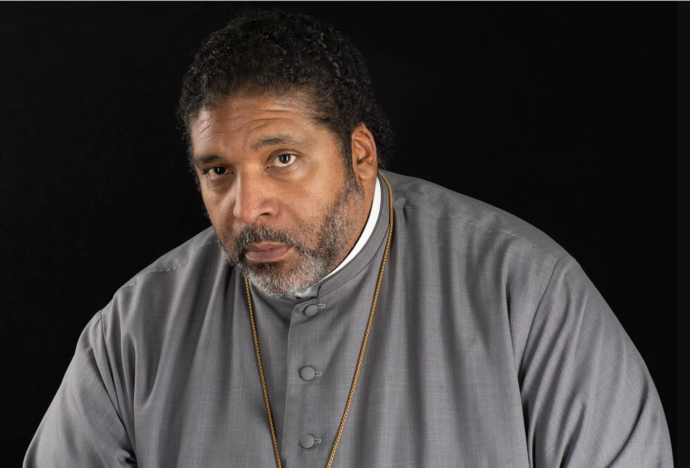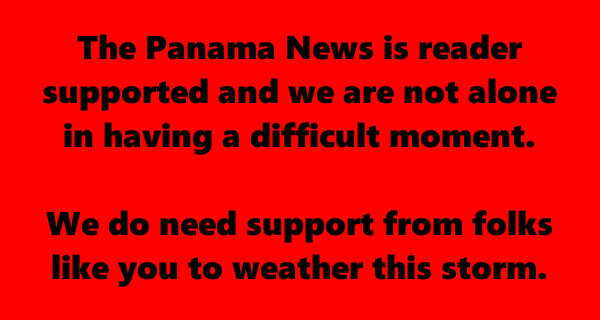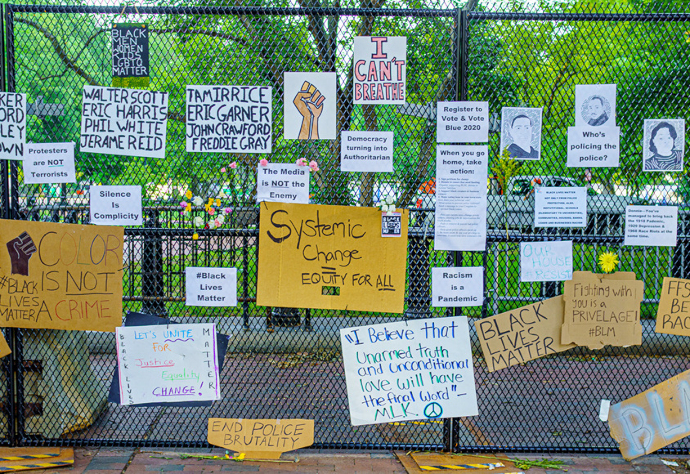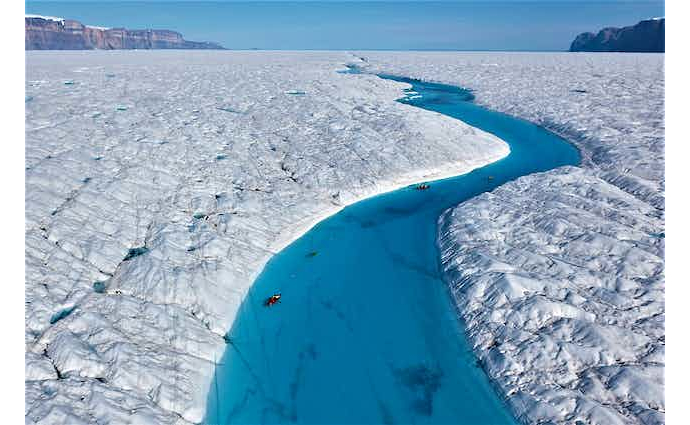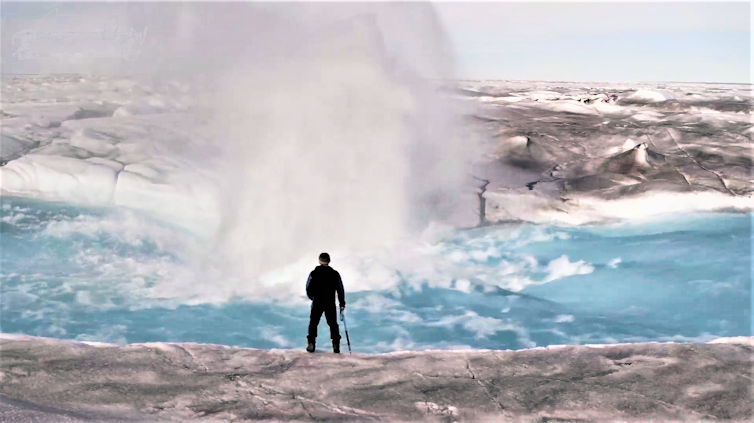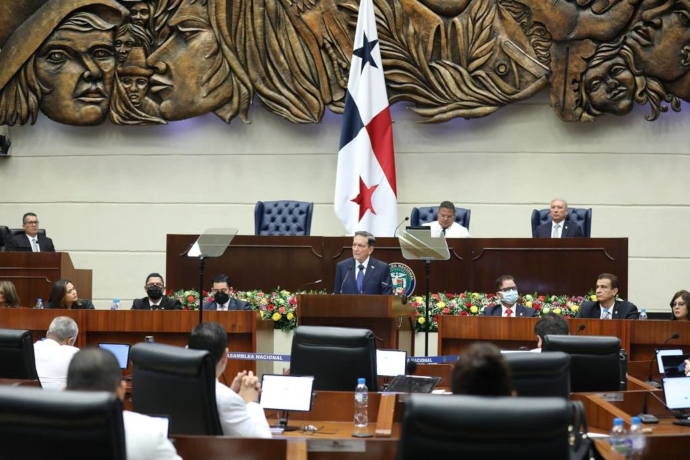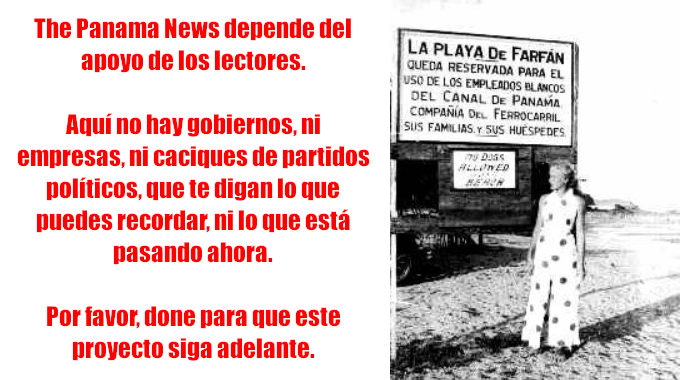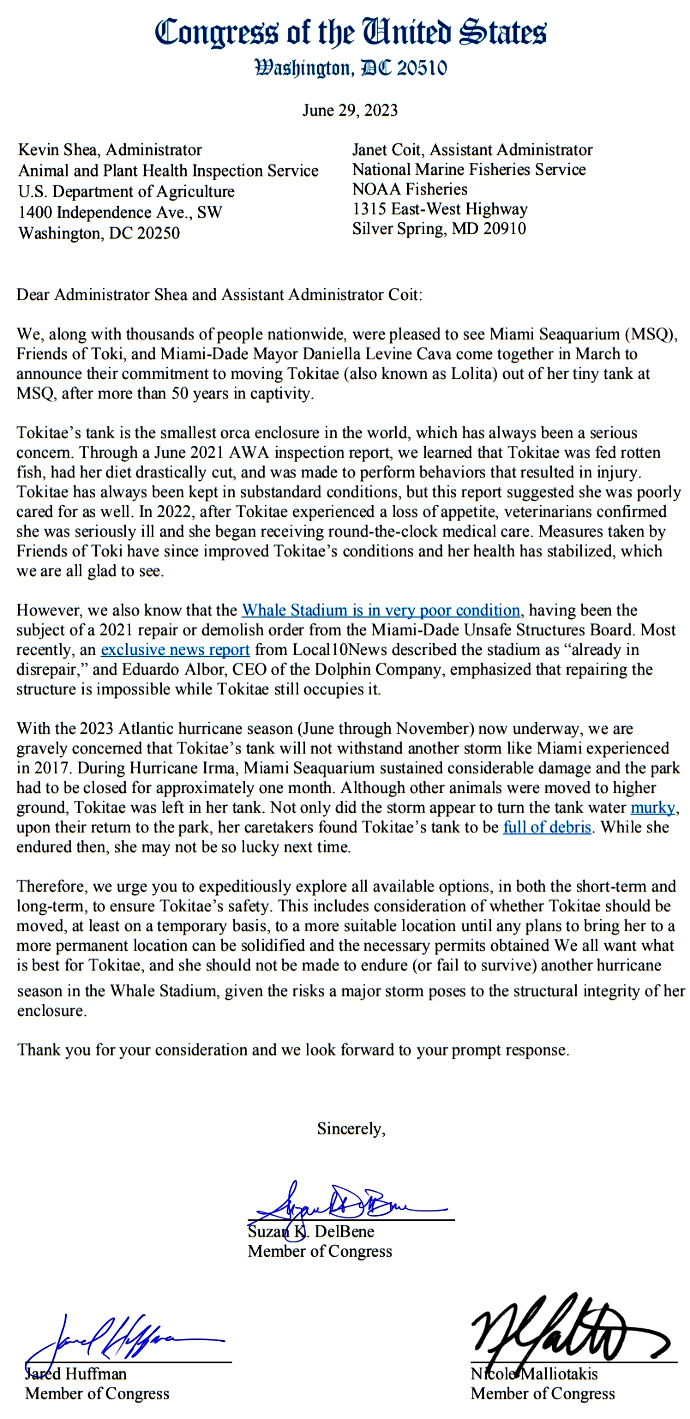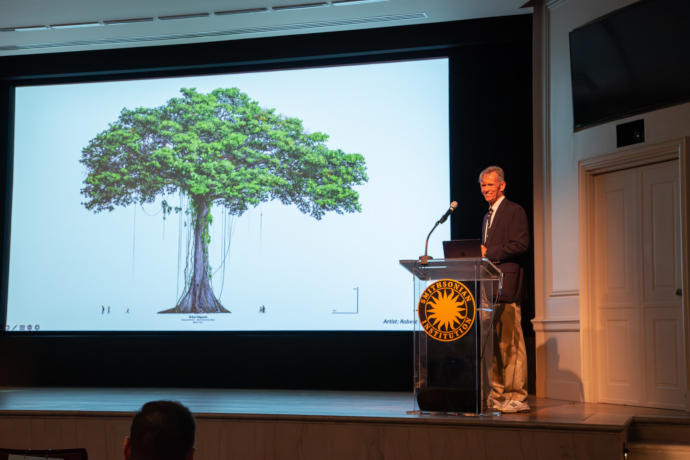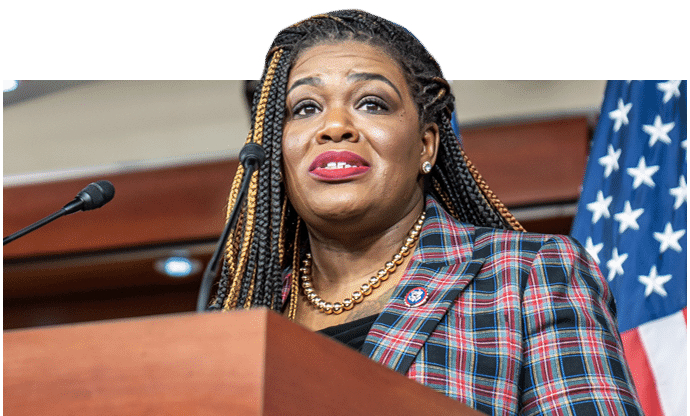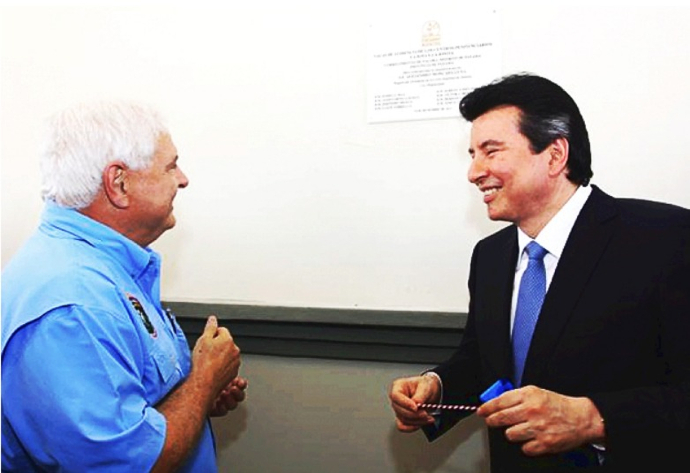Discurso presidencial de 1 julio, 2023. Foto por la Presidencia.
Informe a la Nación
por Presidente Laurentino Cortizo Cohen
Gracias a Dios por permitirme acudir por séptima ocasión a este recinto a cumplir con el mandato constitucional de rendir informe a los panameños acerca de la gestión del Ejecutivo y la situación de nuestro país.
Los informes anteriores los presenté en momentos en que nuestro país enfrentaba grandes adversidades. Hoy Panamá tiene circunstancias distintas, pero es importante recordar cómo encontramos el país y las situaciones que tuvimos que enfrentar los panameños para comprender cuánto hemos logrado.
Han transcurrido 48 meses de mi administración. En esos 48 meses de acción permanente los panameños hemos enfrentado retos monumentales, entre ellos “la tormenta de tormentas”, una pandemia inédita. Ningún otro gobierno en la historia de Panamá tuvo que superar un desafío de esta magnitud.
Al inicio de nuestra administración, la pandemia no fue el único desafío y tampoco era el único problema que afectaba al país. Tuvimos que enfrentar graves problemas heredados del gobierno anterior. Uno de ellos fue la inclusión de Panamá en la lista gris del GAFI en junio de 2019, un mes antes de mi toma de posesión como Presidente de la República.
Sin embargo, después de cuatro años de trabajo en equipo, en defensa de los intereses nacionales, puedo anunciarles hoy que, como resultado del cumplimiento de los 15 puntos del Plan de Acción del GAFI por parte del Gobierno Nacional, en septiembre próximo tendremos la visita de este grupo a nuestro país. Esta es, sin duda, una noticia positiva para Panamá.
Por otro lado, en el mes de julio de 2019 encontramos en las finanzas del Estado un déficit de 2,101 millones de balboas y cuentas por pagar acumuladas de administraciones anteriores que sumaban 1,836 millones de balboas.
Además, el gobierno anterior calculó mal en 1,650 millones de balboas los ingresos corrientes del año 2019 y entregó órdenes de proceder para obras sin respaldo financiero.
Adicionalmente, en el 2020 tuvimos que pagar bonos vencidos del Estado por 1,155 millones de balboas. Bajo esa situación fiscal precaria empezó nuestra gestión gubernamental.
Al inicio de mi administración, necesitábamos recursos para pagar deudas de los gobiernos anteriores, entre otras, pagos pendientes a los docentes, Caja de Seguro Social y a los productores agropecuarios.
Para ello tuvimos que conseguir recursos que obtuvimos gracias a la confianza de organismos financieros, banca e inversionistas, confianza que recuperamos desde los primeros meses de nuestro gobierno.
También es un hecho que la pandemia afectó severamente los recursos del Estado y, en consecuencia, incrementó la deuda pública.
Necesitábamos recursos para enfrentar la pandemia y sus consecuencias; sostener los programas sociales y el proceso de recuperación económica. Recursos para comprar vacunas. Recursos para los millones de Bolsas Solidarias de Alimentos entregadas a la población. Recursos para enfrentar las emergencias ambientales, como los huracanes Iota y Eta. Recursos para mantener el pago de todos los subsidios. Recursos para rescatar y avanzar en obras de infraestructura pública abandonadas. Recursos para invertir a través de diversos sectores en la recuperación económica. Recursos para pagar el subsidio del combustible solidario que ha beneficiado a todos.
Encontramos 1,108 obras de infraestructura, algunas abandonadas, con anticipos millonarios; otras, con múltiples problemas de tipo financiero, administrativo y legal que, en su mayoría, hemos rescatado. Entre ellas, carreteras, la Ciudad de la Salud, el Hospital Manuel Amador Guerrero, Hospital del Niño; Escuela República de Italia, en San Miguelito; Escuela República de Costa Rica, en La Chorrera; Escuela Miguel Alba, en Soná; Estadio Roberto Mariano Bula, en Colón, entre otras.
La pandemia que golpeó al mundo y a nuestro país fue el desafío más difícil que he enfrentado en mi vida, una situación dramática, dolorosa, trágica. En ese escenario estructuramos un plan de emergencia que nos permitió atender la crisis en tres frentes fundamentales, logrando un balance entre las medidas de salud, lo social y lo económico.
El objetivo fundamental de ese plan fue salvar vidas y evitar que colapsara nuestro sistema de salud, como ocurrió en otros países del mundo. No tengo ninguna duda de que nuestro manejo de la pandemia constituye una victoria patriótica; es el triunfo de la unidad de los panameños sobre la amenaza más grande que hemos enfrentado como Nación.
Creamos y ejecutamos el Plan Panamá Solidario, tarea monumental, un esfuerzo de miles de héroes voluntarios y funcionarios que, con gran solidaridad humana, acudieron en apoyo de sus hermanas y hermanos cuando la Patria más los necesitó, aún a riesgo de sus propias vidas.
Igualmente, creamos el Vale Digital, instrumento innovador que, a través de la cédula personal utilizada como tarjeta de débito, ha permitido llevar auxilio económico a quienes quedaron sin posibilidad de generar ingresos.
El Programa Panamá Solidario recibió reconocimiento internacional de parte de la OEA y el Banco Interamericano de Desarrollo con el Premio a la Excelencia de la Red de Gobierno Electrónico de América Latina y El Caribe.
También según datos del Banco Mundial, si no hubiera existido el Plan Panamá Solidario con todas sus acciones, la pobreza en nuestro país habría aumentado en 3.6%. Todas estas acciones nos permitieron preservar vidas y mantener la paz social.
Entre las medidas de alivio impulsadas en pandemia establecimos, además, un periodo de moratoria para suspender temporalmente los pagos de deudas como hipotecas, alquileres, tarjetas de crédito y préstamos.
Por otro lado, y aún con los limitados recursos del Estado debido a los graves efectos de la pandemia, nuestro gobierno mantiene en su totalidad el pago de todos los subsidios destinados a los más vulnerables, los que menos tienen. En esos subsidios y transferencias monetarias para ayudar a los más necesitados invertimos por año 2,530 millones de balboas.
Además, para detener el alza en los precios de los productos y servicios básicos establecimos un subsidio temporal al combustible de B/.3.25 por galón, uno de los precios más bajos del mundo, beneficiando a todos los sectores productivos y el transporte público, impulsando la recuperación económica.
He continuado encabezando personalmente las Giras de Trabajo Comunitario, mediante las cuales llevamos soluciones concretas efectivas a los corregimientos más vulnerables donde existe la pobreza multidimensional. En estas giras semanales participan en las entregas de beneficios de 10 a 20 instituciones, todas vinculadas a las 12 áreas de acción del Plan Colmena.
Las Giras de Trabajo Comunitario son el brazo ejecutor de la estrategia nacional del Plan
Colmena, una Política Social de Estado creada por ley que establece las bases para la lucha
contra la pobreza y la desigualdad. Es un estilo de gobernar diferente, es el constante
patrullaje doméstico que involucra la participación organizada de las comunidades trabajando
en equipo con el Gobierno Central, Juntas Técnicas, los Gobiernos Locales, representantes
de corregimiento y alcaldes.
En estos 48 meses de gestión he realizado 139 de estas giras con un total de 656 actividades que superan todas las realizadas en las tres últimas administraciones.
Gracias a éstas y otras acciones sociales de nuestro gobierno enfocadas en la protección de los más vulnerables, hemos logrado reducir los índices de pobreza y pobreza extrema en nuestro país, aún en las condiciones adversas que nos impuso la pandemia.
Ese método de trabajo con la gente y para la gente es el que, Dios primero, espero mantener hasta el último día de mi mandato.
Según informe de la Comisión Económica para América Latina y el Caribe (CEPAL), la pobreza extrema en Panamá se redujo de 6.6% en 2019 a 5.7% en 2021.
Además, como dije anteriormente, según el último informe del Banco Mundial la tasa de pobreza en Panamá en 2020 habría sido 3.6% más alta si no hubiésemos ejecutado el Plan Panamá Solidario. Ese mismo informe señala que la ejecución focalizada del Plan Panamá Solidario continúa siendo fundamental para la reducción de la pobreza y la eficiencia del gasto. Es un hecho que hemos reducido la pobreza, pero aún tenemos mucho por hacer.
La inversión social de nuestro gobierno es la más grande en la historia del país. Nuestro propósito es sentar las bases para derribar la “sexta frontera”, es la lucha contra la pobreza y la desigualdad; pero, reitero, aún tenemos mucho por hacer.
Déjenme decirles algo. Las respuestas concretas que llevamos a las comunidades para procurarles un mejor vivir son beneficios que se entregan sin preguntar a nadie si pertenece o no a un partido político. Para nuestro gobierno, no hay bandera política que esté por encima de las necesidades de ningún panameño.
Dentro del gran esfuerzo patriótico de nuestro país en la lucha contra la pandemia también debemos destacar la educación. La pandemia aceleró el avance de la agenda digital del Estado para la transformación de la enseñanza. En ese sentido, la Autoridad Nacional para la Innovación Gubernamental desarrolló con el Ministerio de Educación la Plataforma ESTER, sistema basado en Moodle que hoy evoluciona como gestor de aprendizaje y portalde capacitación para los docentes.
Moodle es una plataforma que permite crear cursos en línea, agregar asignaciones y monitorear el progreso de los estudiantes promoviendo el conocimiento colectivo.
Por otro lado, mi administración está comprometida con la formación y perfeccionamiento del docente, que es, sin duda, el factor fundamental en la calidad de la educación. En ese sentido, la recién sancionada ley que crea el Instituto de Perfeccionamiento y Bienestar del Docente es un paso concreto de este gobierno para alcanzar ese propósito.
Debo destacar que, en la actualidad, el 65% de los centros educativos del país están conectados a internet, beneficiando a 671,794 estudiantes en un total de 1,906 escuelas conectadas en el sector oficial. En esta administración hemos conectado 151 escuelas con fibra óptica, 84 escuelas con internet satelital y hemos entregado la orden de proceder para conectar 125 escuelas más en la comarca Ngäbe-Buglé, beneficiando a más de 25 mil estudiantes.
Quiero destacar con particular emoción y orgullo la reciente graduación de la primera promoción 2023 de la Academia Bilingüe Panamá para el Futuro, que opera en la Ciudad del Saber. Esta es la primera institución pública en Panamá que cuenta con bachillerato bilingüe internacional para la preparación de jóvenes estudiantes sobresalientes.
Por otro lado, seguimos fortaleciendo la educación STEAM, en ciencias, tecnología, ingeniería, artes y matemáticas, con 1,177 clubes de robótica participando en las 16 regiones educativas gracias a un esfuerzo público-privado.
Esta política de mejoramiento educativo nos acredita como país sede de las Olimpiadas Mundiales de Robótica que se celebrarán en noviembre de este año bajo el lema “Conectando al Mundo”.
Cumpliendo nuestro compromiso con la transparencia, implementamos por primera vez la plataforma Cotización en Línea, un sistema de compras y contrataciones públicas 100% en línea, transparente, accesible al escrutinio y análisis de la ciudadanía.
Dicha plataforma permite, además, que las pequeñas y medianas empresas puedan ofrecer al Estado sus productos y servicios para compras de hasta 10 mil balboas, lo que representa más del 80% de todas las compras públicas. Esta iniciativa transparenta, como nunca antes, la selección de contratistas en el proceso de compras del Estado.
Hasta el mes de mayo del 2023, se realizaron 246,216 cotizaciones en línea por un valor de 892 millones de balboas.
Otra acción de nuestro gobierno en su política de transparencia fue la rendición de cuentas por parte de los ministerios e instituciones del Estado del uso de recursos que les fueron asignados para el manejo de la pandemia. Así cumplimos con todos los procesos y controles establecidos en las leyes, normas y procedimientos. Esta información fue divulgada de forma masiva a través de medios de comunicación y en línea.
Quiero destacar que, en el Informe del 2023 del Consejo de las Américas sobre el Índice de Capacidad para Combatir la Corrupción, Panamá registró el mayor avance de la región en el puntaje general de este año con una mejora sustancial del 9% respecto al año 2022.
También de acuerdo con el Informe del Consejo de las Américas, nuestra capacidad para combatir la corrupción continúa en una trayectoria ascendente que nos ha llevado del puesto 10 en el 2020 a la posición 6 en el 2023.
El Informe confirma que nuestro país ha logrado mejoras significativas en su capacidad legal y destaca instrumentos jurídicos promovidos por nuestro gobierno para hacer frente a la corrupción. Para mí, la administración de justicia es la columna vertebral de la democracia.
Tengo la satisfacción de haber cumplido con los panameños mi compromiso en la campaña presidencial de 2019 al designar 6 nuevos magistrados de la Corte Suprema de Justicia a través de un proceso transparente, inédito en la historia de nuestro país. Son los fiscales, jueces y magistrados quienes fortalecen la institucionalidad, garantizan la seguridad jurídica y el Estado de Derecho. Les reitero: nadie, absolutamente nadie, está por encima de la ley.
La recuperación económica de Panamá es innegable con un crecimiento de 15.8% en 2021 y 10.8% en 2022, superando los niveles de la región y entre las mejores a nivel global. En materia laboral, la tasa de desempleo disminuyó de 18.55% en el 2020 a 9.9% en el 2022. Además, Panamá tiene una de las tasas de inflación más bajas del mundo, 2.9% al cierre del 2022. El esfuerzo que hemos hecho como país para la recuperación económica ha sido exitoso, como es reconocido por importantes organismos internacionales.
Así, en marzo de este año el presidente del Banco Interamericano de Desarrollo (BID) invitó a los países de la región a seguir el ejemplo de persistencia de Panamá como un modelo para superar situaciones difíciles. No ha sido tarea fácil, teniendo en cuenta que durante los dos primeros años de pandemia el Estado dejó de percibir ingresos corrientes por 4,477 millones de balboas.
El sector agropecuario continúa creciendo, aportando un 3% al producto interno bruto. En esto ha sido fundamental el Plan Agro Solidario dirigido a pequeños productores, a través del cual el Banco de Desarrollo Agropecuario tramitó 632 préstamos al 0% de interés, desembolsando 14.4 millones de balboas.
Por otro lado, establecimos políticas públicas para la protección y desarrollo de la producción agropecuaria, entre ellas la creación, mediante Ley, de la Agencia Panameña de Alimentos, que ahora sí resguarda y promueve la producción nacional. La Agencia Panameña de Alimentos reemplazó a la AUPSA, institución creada mediante Decreto Ley 11 en el año 2006, también conocida por nuestros productores como la “autopista de las importaciones”.
Así mismo, mediante la sanción de la Ley de la Política Agroalimentaria de Estado (PADE) establecimos, por primera vez, las bases jurídicas para la transformación del sector agropecuario, el desarrollo de la producción y la estabilidad de los productores y sus familias.
Aprovecho para compartir el más reciente Informe de evaluación del Primer Debate Presidencial del sector agropecuario realizado en el 2019, organizado por la Asociación de la Comunidad Productora de Tierras Altas. Dicho informe indica que, a marzo de 2023, el 90% de los compromisos que asumí como candidato presidencial ya han sido cumplidos en estos 48 meses.
De esta manera, con acciones concretas demostramos que éste ha sido y es, como nunca antes, un gobierno aliado de los productores panameños.
Como ya les mencioné, nuestro gobierno ha rescatado obras abandonadas por administraciones anteriores, obras largamente esperadas por la comunidad.
Rescatamos y terminamos el Hospital Dionisio Arrocha, en Puerto Armuelles; la Escuela República de Costa Rica, en La Chorrera; la Escuela República de Italia, en San Miguelito; la Potabilizadora de Villa Darién, la Potabilizadora de El Valle de Antón y la Potabilizadora de San Carlos.
Rescatamos y estamos construyendo el nuevo Hospital Manuel Amador Guerrero, el Estadio Roberto Mariano Bula, el Estadio Juan Demóstenes Arosemena, el nuevo Hospital del Niño, el Corredor de las Playas, el Puerto de Cruceros de Amador, el Mercado Público y el Mercado de Abastos de La Chorrera; la Escuela Miguel Alba, en Soná; la Potabilizadora de Arraiján, que beneficiará a más de 300 mil habitantes, y la Potabilizadora de Gamboa, que completará el abastecimiento de agua para la ciudad capital, entre otros.
Estamos recuperando la red vial nacional con proyectos como la ampliación a ocho carriles de la vía Puente de Las Américas-Arraiján; el Intercambiador Puente Centenario-Área Económica Especial Panamá Pacífico; la Línea 3 del Metro; Intercambiador Avenida Centenario-Antigua Autopista Panamá – La Chorrera, y el paso a desnivel de La Pesa.
Estas obras rescatadas y recuperadas, y muchas otras iniciadas por nuestra administración, impactarán positivamente por décadas la vida de los panameños.
Nuestro país enfrenta desafíos que exigen decisiones firmes, bien analizadas, que requieren de un enfoque sereno para poder adoptar soluciones concretas. Una de esas decisiones fue el nuevo contrato acordado con la empresa Minera Panamá.
Hemos logrado un acuerdo justo para ambas partes que, sobre todo, defiende y resguarda nuestros derechos como país soberano sobre nuestros recursos naturales para obtener de ellos el mayor beneficio colectivo posible.
El nuevo contrato es mucho más beneficioso que el anterior ya que favorece al país en los aspectos económicos, sociales, laborales y ambientales.
Mediante el nuevo contrato, en lo económico nuestro país tiene garantizado un pago mínimo anual de 375 millones de balboas, que equivale a 10 veces más de lo que Panamá recibía anteriormente. Además, se garantiza el pago de regalías entre 12 y 16% sobre la ganancia bruta de la mina mientras que en el contrato anterior esa regalía era sólo de 2%.
También ahora la empresa minera deberá pagar a la República de Panamá todos los impuestos establecidos en nuestro territorio. O sea, pagará impuesto sobre la renta, impuesto de dividendos, impuesto de remesa y el impuesto de ITBMS por las compras que efectúen.
En el aspecto laboral, se limita el número de trabajadores extranjeros al 15% del total del personal contratado, mientras que el contrato anterior permitía un 25% de trabajadores extranjeros. Además, el nuevo contrato obliga a la capacitación de trabajadores panameños.
En lo ambiental, y según el nuevo contrato, la empresa está obligada a cumplir con los estándares internacionales en lo que respecta a los planes de cierre y postcierre de la operación de la mina.
Con el nuevo contrato, se establecerá una oficina en la mina con presencia de las autoridades competentes para la supervisión del fiel cumplimiento de lo pactado. También el nuevo contrato establece el compromiso de utilizar energía limpia y asegurar un programa de reforestación.
Este contrato firmado por las partes debe cumplir los trámites que establece la Constitución Política para que pueda ser adoptado como Ley de la República; es decir, ser refrendado por la Contraloría General de la República y sometido a la Asamblea Nacional.
Este nuevo contrato, tal como fue redactado, garantiza beneficios directos para los panameños en base al pago mínimo garantizado de 375 millones de balboas por año. En ese sentido, el 5% de la anualidad alrededor de 20 millones de balboas por año será destinado a la creación y funcionamiento del Instituto de Estudios para el Perfeccionamiento y Bienestar del Docente.
El 20% —75 millones de balboas— por año será destinado para que ningún jubilado por vejez o pensionado de la Caja de Seguro Social reciba menos de 350 balboas mensuales.
El 25% —más de 90 millones de balboas— por año será destinado a los distritos de Donoso
y Omar Torrijos Herrera, en la provincia de Colón, y La Pintada, en la provincia de Coclé.
El 50% de la anualidad —alrededor de unos 190 millones de balboas— por año será
destinado al Programa de Invalidez, Vejez y Muerte (IVM) de la Caja de Seguro Social.
Otra decisión trascendental es la relacionada con la Caja de Seguro Social.
En consideración de lo anterior, reitero que el Gobierno Nacional está preparado para participar en la Mesa del Diálogo por la Caja de Seguro Social, de la cual deben surgir las opciones viables que fortalezcan, particularmente, el Programa de Invalidez, Vejez y Muerte.
Sin embargo, el Gobierno Nacional es respetuoso de la Ley 51 de 27 de diciembre de 2005, que reformó la Ley Orgánica de la Caja de Seguro Social y que, en su artículo 2, establece que la Caja de Seguro Social es una entidad de Derecho Público autónoma del Estado en lo administrativo, funcional, económico y financiero con personería jurídica y patrimonio propio.
Así mismo, el artículo 22 de la misma ley indica que los Órganos Superiores de Gobierno de la Caja de Seguro Social son la Junta Directiva, órgano responsable de fijar las políticas para el funcionamiento, mejoramiento y modernización de la Caja de Seguro Social y el Director General.
Con independencia de lo antes señalado, respetuoso de la autonomía de la Caja de Seguro Social, el Gobierno Nacional ha dispuesto en el nuevo contrato con Minera Panamá asegurar para el sostenimiento del Programa de Invalidez, Vejez y Muerte, un aporte no menor a 190 millones de balboas por año durante 20 años. Esto además de mantener los otros aportes anuales del Gobierno Nacional a la Caja de Seguro Social.
Hago un llamado a todos los sectores de la sociedad para que tratemos estos temas con responsabilidad, despojados de intereses económicos, políticos o de cualquier otra índole que no sea el bienestar de las mayorías. Soy optimista acerca del futuro de Panamá. El triunfo de nuestro pueblo es el triunfo del país que tenemos hoy con las condiciones más favorables y más deseables de la región. Vivimos en un gran país en el que rigen la democracia, el Estado de Derecho, con un gobierno que escucha a la gente y cree en el diálogo.
Éste ha sido, es y será un gobierno de puertas abiertas. Un gobierno que respeta a los que están de acuerdo y a los que no están de acuerdo. Vivimos en un país donde también se respeta la libertad de expresión, la institucionalidad y la separación de poderes. Somos un pueblo de esperanza y fe que se crece ante la adversidad y sale adelante. Y éste informe a la Nación es también testimonio del triunfo de nuestro pueblo.
Me siento orgulloso de ser panameño.
Muchas gracias.
Contact us by email at / Contáctanos por correo electrónico a fund4thepanamanews@gmail.com
To fend off hackers, organized trolls and other online vandalism, our website comments feature is switched off. Instead, come to our Facebook page to join in the discussion.
Para defendernos de los piratas informáticos, los trolls organizados y otros actos de vandalismo en línea, la función de comentarios de nuestro sitio web está desactivada. En cambio, ven a nuestra página de Facebook para unirte a la discusión.
~ ~ ~
These announcements are interactive. Click on them for more information.
Estos anuncios son interactivos. Toque en ellos para seguir a las páginas de web.





